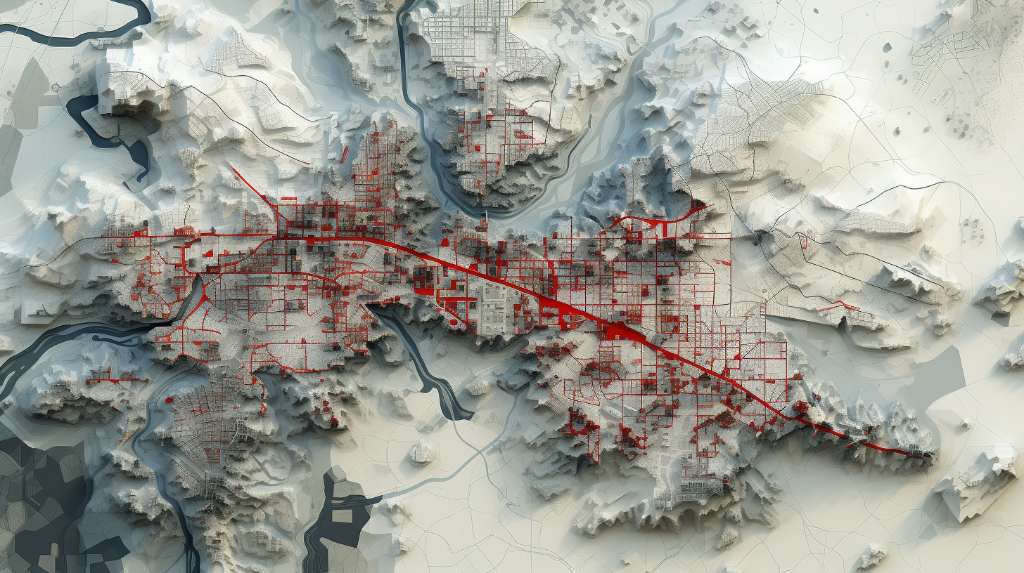Elevating Survey Capabilities through Geographic Information Systems
By SurveyEquipmentGuySurveys have long been a crucial tool for gathering data and insights across various fields, from market research and customer satisfaction to urban planning and environmental analysis. However, as technology continues to advance, so should our methods of conducting surveys. That’s where Geographic Information Systems (GIS) come into play, revolutionizing the way surveys are conducted and analyzed. Let’s dive deeper into how GIS can elevate survey capabilities and unlock a world of possibilities.
What is GIS?
Before we explore the impact of GIS on surveys, let’s clarify what exactly GIS is. In simple terms, GIS is a digital mapping and data analysis tool that combines geography, data, and sophisticated algorithms. It allows us to visualize, analyze, and interpret data through interactive maps and spatial relationships. With GIS, we can create detailed maps, integrate various data sources, perform complex spatial analysis, and present findings in a visually compelling manner.
Using GIS in surveys provides a spatial dimension to the data collected, enhancing our understanding of both the individual components and their relationships within a geographic context. This integration of survey data and geographic information adds valuable insights and empowers decision-makers to make informed, location-based choices.
The Benefits of GIS in Surveys
1. Enhanced Data Collection: GIS allows surveyors to collect data efficiently and accurately by leveraging intuitive map-based interfaces. Field workers can capture data directly at the survey location, reducing the chances of errors or discrepancies. Additionally, GIS enables the integration of multimedia elements, such as images and videos, alongside survey responses.
2. Location Intelligence: By incorporating geographic information into survey analysis, GIS provides a broader understanding of the data collected. This spatial context enables researchers to identify patterns, trends, and relationships that might not be apparent through traditional survey analysis. For example, analyzing survey responses alongside demographic or environmental data can reveal correlations that shape decision-making.
3. Data Visualization: Humans are visual beings, and GIS excels at presenting survey results in compelling visual formats. Using interactive maps, charts, and graphs, survey findings can be communicated effectively to a wide audience. Visualizations help to simplify complex information, making it more accessible and engaging for stakeholders.
4. Better Decision-Making: GIS empowers decision-makers by providing them with a comprehensive and easily understandable overview of survey results. By overlaying survey data onto maps, decision-makers gain insights into geographic patterns and hotspots. This information supports evidence-based decision-making, facilitates resource allocation, and helps implement targeted interventions.
Examples of GIS in Surveys

The potential applications of GIS in surveys are vast, covering a wide range of industries and fields. Here are a few notable examples:
1. Urban Planning:
GIS plays a crucial role in urban planning surveys. By integrating survey data with city maps and geospatial information, planners gain a holistic understanding of the city’s demographics, infrastructure, and land use patterns. This information aids in identifying areas for development, analyzing transportation needs, and ensuring efficient resource allocation.
2. Environmental Monitoring:
GIS enables comprehensive environmental surveys by incorporating data on factors such as air and water quality, biodiversity, and land cover. By overlaying survey responses on digital maps, scientists and researchers can identify environmental hotspots, monitor changes over time, and design targeted conservation strategies.
3. Market Research:
GIS enhances market research surveys by providing spatial insights into consumer behavior, preferences, and demographics. By analyzing survey data alongside location information, businesses can identify potential market niches, optimize store locations, and design targeted marketing campaigns.
Conclusion
The integration of Geographic Information Systems (GIS) with surveys revolutionizes the way we collect, analyze, and interpret data. By adding a spatial dimension to surveys, GIS enhances data collection, provides location intelligence, enables compelling data visualization, and empowers decision-makers. The applications of GIS in surveys are diverse, spanning areas such as urban planning, environmental monitoring, and market research. As we continue to embrace technological advancements, harnessing the power of GIS in surveys will undoubtedly unlock a world of possibilities for data-driven decision-making.
